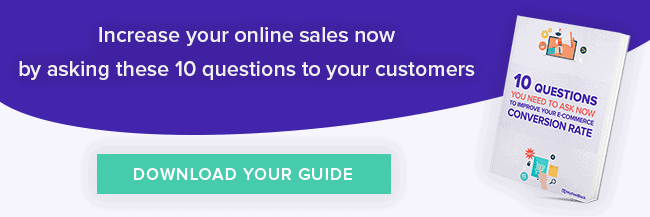Of course, customer feedback is the single best way to improve customer satisfaction. However, just because customers are asked to provide feedback doesn’t necessarily mean they will. Unfortunately, some companies never see the benefit of customer feedback, usually because their feedback strategies are not well planned or implemented, and are considered burdensome by customers. But...
Of course, customer feedback is the single best way to improve customer satisfaction. However, just because customers are asked to provide feedback doesn’t necessarily mean they will. Unfortunately, some companies never see the benefit of customer feedback, usually because their feedback strategies are not well planned or implemented, and are considered burdensome by customers.
But keep in mind that achieving a 100% response completion rate is not necessarily a valid goal in and of itself. Maybe customers are thoroughly happy with a business but simply don’t want to take the time to respond to a feedback request. This shouldn’t necessarily be seen as a problem. A more valid goal is to collect feedback from a representative sample of the customer demographic, making sure that everyone who would like to respond has an equal opportunity to do so, and that there is nothing preventing them from sharing their insights.
Overcoming Obstacles to Survey Completion
Low completion rates could be due to several different factors. It could be that customers find the survey to be confusing or time-consuming, leading to frustration and abandonment. Or, maybe, customers don’t feel a strong enough connection with a company so they see no point in sharing their opinions. Or, perhaps, the wrong customer demographic is being targeted.
Whatever the reason, a business must carefully consider what is preventing customers from providing valuable insights since higher rates of survey abandonment equal less useful, accurate feedback. Bain Insights suggests that business-to-consumer surveys should aim for, at least, a 60% completion rate; business-to-business surveys should yield, at the minimum, a 40% completion rate. Anything less should be seen as a red flag, providing untrustworthy and/or incomplete data.
To improve completion rates consider the following strategies:
Develop the best questionnaire
Design the feedback survey to encourage maximum response but also to collect the required information. The best way to begin is to consider what you see as ideal feedback. It goes without saying that meaningful responses are the most useful ones, so create questions which invite helpful responses. And, if possible, pilot the questionnaire to gauge response to its design and delivery. Analyze the responses and if, for any reason, participants had trouble, revise the survey. Make sure there are no obstacles preventing anyone from completing it.
Decide how you will select your sample of customers
Generally speaking, it’s best to aim for a representative cross-section of customers; however, this is not always realistic, affordable, or even useful. Therefore, consider your feedback objectives and target customers accordingly. For instance, a business might want to find out why customers who bought from its website three months ago have not returned. Or how likely long-term customers are to spread positive word-of-mouth. All customers are not the same and not all feedback is equal. Think about your feedback objectives and carefully consider whose opinion would be most relevant and useful.
Decide on a sample size
Consider how many returned questionnaires you will need in order to obtain reliable and accurate results and what a likely overall response rate will be. This will be influenced, in part, by how many discrete customer groups you have included in your survey. The more groups, the larger the total sample size will need to be. Statisticians generally suggest a sample size of no less than 100 and no more than 10% of the total, so long as it does not exceed 1,000.
Choose the best method for distributing and collecting the questionnaire
Postal questionnaires are often the least expensive method but can also have the lowest response and completion rates. Face-to-face interviews may be more appropriate in some cases but will also increase costs. Consider your customer demographic. If they are younger, consisting mostly of digital natives, sending out links via social media should yield some good response rates. According to a recent Forbes report, Millennials are 62% more likely to interact with a company if it reaches out to them via social media. And, since 42% of Millennials say they are interested in helping businesses improve their products and services, a business would obviously do well to maximize its social network presence in order to increase engagement with younger customers.
Guarantee Your Survey’s Success
Whether a company routinely wins accolades from customers or is routinely maligned, asking for customer feedback is a requirement to ensure its long-lasting success. Every business’s goal is to keep as many customers as it can and a well-designed feedback survey will help it do just that, turning even the toughest customers into brand advocates. Taking care to deliver a well-written and administered survey increases the chance that a business will receive higher completion rates, thus yielding more useful results.








